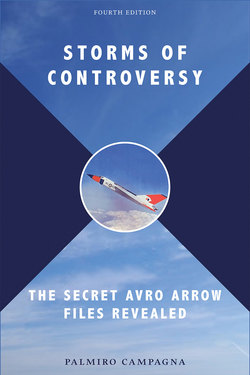Читать книгу Storms of Controversy - Palmiro Campagna - Страница 11
На сайте Литреса книга снята с продажи.
ОглавлениеPREFACE TO THE FIRST EDITION
The story of the Avro Arrow is one of emotion, intrigue, excitement, happiness, sorrow, and anger, but most of all it is the story of tragedy. What began as an entire nation working together to achieve the impossible ended with the destruction of that achievement. Several books and articles have since appeared, each trying to explain what went wrong. In these pages, for the first time in more than 30 years, many of the remaining classified documents on the subject are finally allowed to tell their story. Admittedly, gaps in the information yet exist, but what unfolds in these pages already tells a dramatically different story. I have quoted extensively from these documents so as not to distort or take their information out of context. Where matters become very technical, I have preferred to leave the explanations in the very words of the individuals who wrote them so long ago. I have included some of my own speculation in very specific areas, but I have left the reader to formulate personal conclusions on what happened to the Arrow. In the end, I address many of the myths and misconceptions that have developed over the years, trusting I have not created any of my own. I have attempted to document as much as possible in that regard.
Although it has been said that the Canadian aerospace industry suffered a major setback with the cancellation of the Arrow, I believe the country as a whole was affected psychologically. After cancellation, an ex-Avro employee commented that it seemed as if the spirit of the nation had died. Compare this to the U.S. experience: when the Space Shuttle Challenger exploded in 1986, American prestige was affected; however, Americans regrouped and forged ahead in the face of this adversity. With the Arrow cancellation, Canada decided it simply could not handle these types of projects, seemingly preferring to become a branch plant of the United States. From that point in time, we seem to have developed the attitude “If it’s Canadian, there must be something wrong with it.” Witness the television commercial concerning high-tech developments and Canada’s 125th anniversary asking, “Can Canadians compete?” Would other countries even consider asking themselves such a question? It is time for our attitudes to change.
I am indebted to so many people, too numerous to mention, whose encouragement, advice, and insight are deeply appreciated. A few special individuals, though, must be highlighted. First and foremost, my wife, Jane Maxwell, for putting up with my long hours at the archives and the keyboard. Second, an absolute gentleman and brilliant engineer, Jim Floyd. Special thanks to Air Commodore Ray Foottit, the late Air Vice Marshal John Easton, and Dr. Omond Solandt for putting up with my questions; to Roberto Brun del Re, Vern La Rue, and Nancy McCallan for their early assessment of the manuscript; to Ken Lepper for providing some of the photos; and to Russ Carstensen.
Finally, I offer my thanks to the staff at Library and Archives Canada in Ottawa and the National Archives and Records Administration in Washington, D.C.; the National Research Council in Ottawa; the Department of National Defence, which provided photos and information; the Dwight D. Eisenhower Presidential Library and Museum in Abilene, Kansas; and the United States Air Force, which provided some photos. The documentation used is all declassified and available to the general public.
